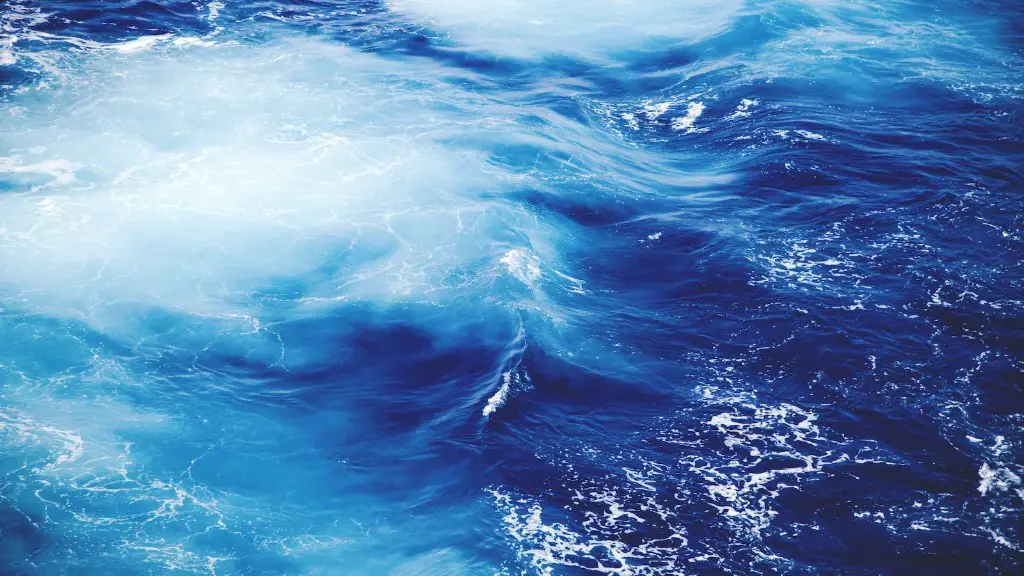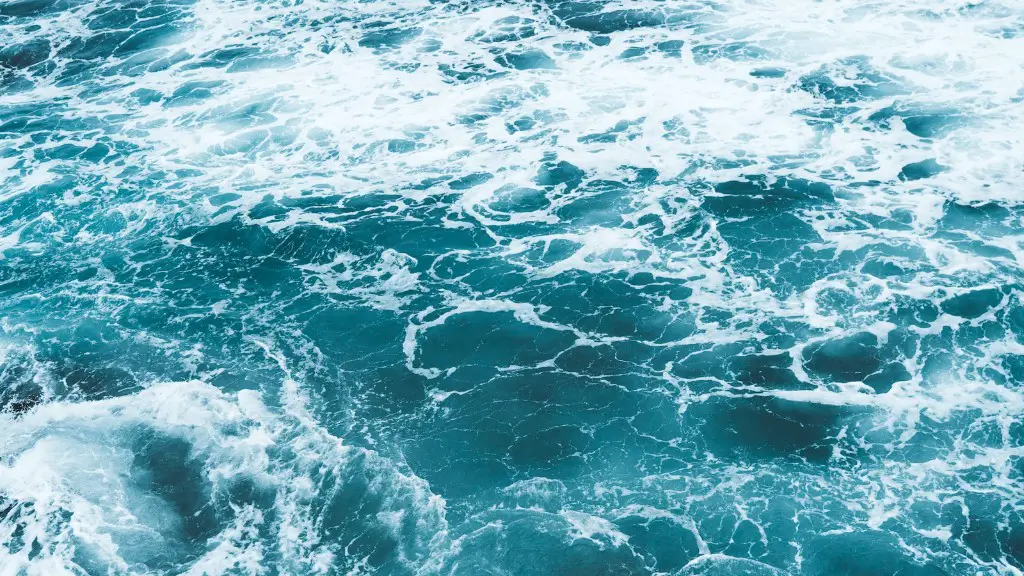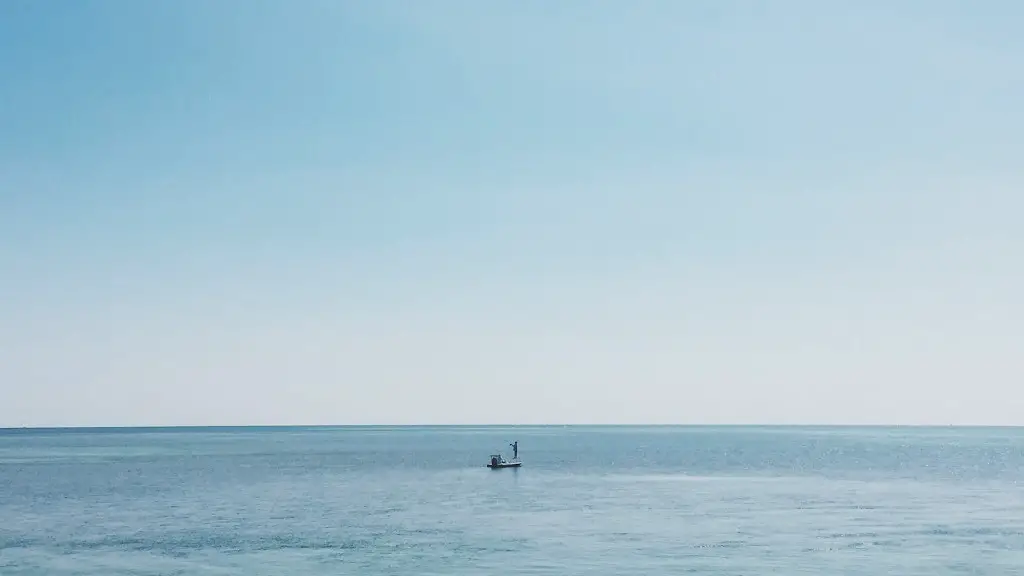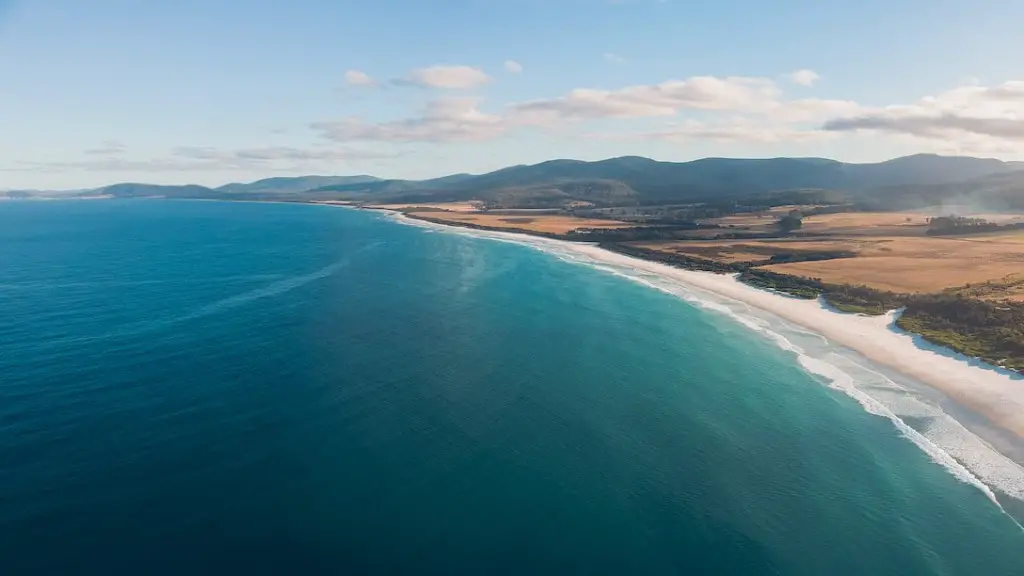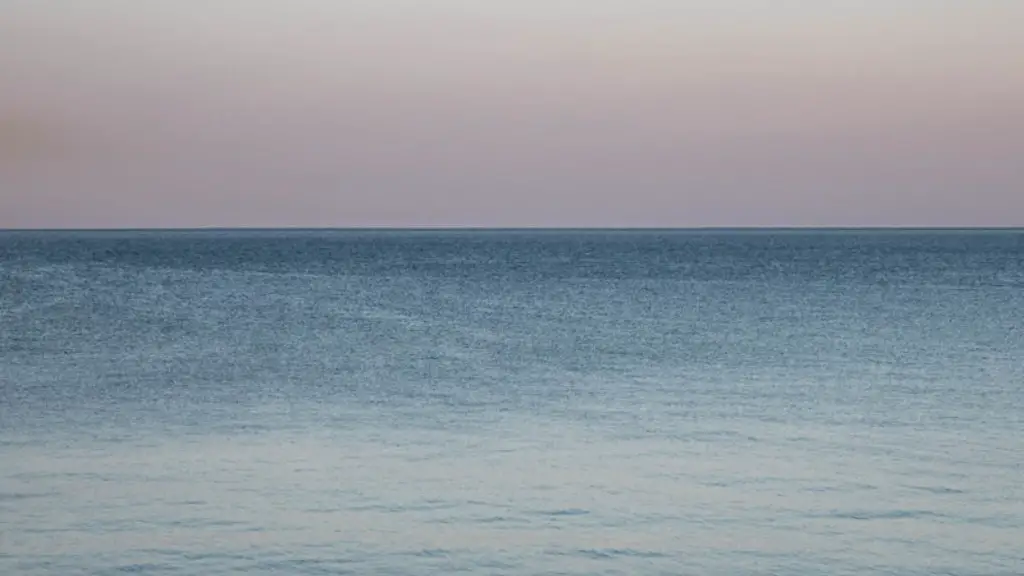Introduction: The Atlantic Ocean is one of the most expansive bodies of water in the world, covering roughly one fifth of the Earth’s surface. It is the second-largest ocean, and it is situated between North and South America, and the European landmass. On the other side of the Atlantic lies the Mediterranean Sea, which spans approximately two and a half million square kilometers and is connected to the Atlantic Ocean via the Strait of Gibraltar. This article will explore what connects the Atlantic Ocean to the Mediterranean Sea, as well as the history and geography of the strait.
The Strait of Gibraltar, or the ‘Pillars of Hercules’ as it is known by the Ancient Greeks, is the bridge that connects the Atlantic Ocean to the Mediterranean Sea. It is located near the northern tip of Africa and spans about eleven kilometers at its narrowest point. The strait has historically been seen as a great divide between the Old World and the New, and it has been used throughout the centuries as a naval military base by major powers such as the British and Spanish.
Because of its strategic location, the Strait of Gibraltar has been an important trade route since antiquity. The Phoenicians and Greeks used the strait in their journeys to the west, while the Romans used it as a major hub for trade between Britain and the Italian Peninsula. In the 15th century, it became the location of Europe’s first trans-oceanic trading post.
Today, the Strait of Gibraltar is one of the busiest shipping lanes in the world, with over 300 ships passing through it each day. Approximately two thirds of this traffic is commercial cargo ships, and the rest is made up of smaller pleasure boats and tour ships. The strait also serves as an important fishery for several European countries.
The Strait of Gibraltar is home to several important species of wildlife, such as bottlenose dolphins and sea turtles. These species have adapted to the conditions of the strait, making them a vital part of the Mediterranean Sea’s food chain. Other species, such as the Iberian lynx, can be found in the surrounding area, and their populations are monitored for conservation reasons.
Environmentalists have become increasingly concerned about the effects of the increasing levels of maritime traffic in the strait, as this is thought to be eroding the natural habitat of some species and contributing to air pollution. In response to this, the European Union has implemented a series of environmental protection measures, such as lower speed limits and strict fuel consumption policies.
Geologists believe that the Strait of Gibraltar was formed some 5.2 million years ago, when the two tectonic plates that make up Africa and Europe collided. This collision pushed up the land on either side, forming the strait we see today.
Socio-Economic Impact of the Strait of Gibraltar
The Strait of Gibraltar is an important lifeline for many countries in Europe and North Africa. It provides employment for thousands of people in the transportation and fishing industries, and supports hundreds of businesses in the surrounding areas. The strait also serves as a gateway for many of Europe’s major cities, as it links the Mediterranean Sea to the Atlantic Ocean.
The strait has had a significant role in the socio-economic development of the countries that surround it. For example, the Spanish port city of Algeciras has seen tremendous growth in recent years, thanks largely to its position at the entrance of the strait.
The Strait of Gibraltar holds a special place in the hearts of many Europeans, and government bodies have implemented various initiatives to ensure the health and safety of the area. These include regular water quality tests, as well as educational programs to raise public awareness of the area and its importance.
Religious Significance of the Strait of Gibraltar
The Strait of Gibraltar has been a source of spiritual significance for many centuries. For example, Muslim sailors believed that the strait was the entrance to the Garden of Paradise. According to legends, the strait was also the site of a divine encounter between Hercules and the giant Triton, and many Europeans still believe that Hercules’ Pillars mark the entrance to the strait.
In Hindu mythology, the strait is known as ‘Gatu Ratri’, which means the ‘Night of Passage’. It is believed to be the site where the god Shiva crossed over from India to the evening world. Some have even argued that the strait was the location of The Tower of Babel, a mythical structure said to have been built by the ancient Sumerians.
The Strait of Gibraltar is also associated with Judaism. It is believed that its northern shore is the site of the prehistoric city of Tarshish, mentioned in the Bible as the destination of the prophet Jonah.
Controversies Surrounding the Strait of Gibraltar
The Strait of Gibraltar has been the subject of many controversies over the years, largely due to its strategic importance. For example, Spain has long held claims to the strait, which have been challenged by both Morocco and the United Kingdom. These claims have led to a string of diplomatic disputes, and the issue still remains unresolved.
More recently, Spain and Morocco have clashed over the fishing rights in the strait, which has led to several disputes in the European Union’s court system. The two countries remain deadlocked on the issue, and there are no signs of resolution in the near future.
The Strait of Gibraltar is also a major source of contention between Gibraltar and Spain. Spain has long claimed sovereignty over Gibraltar, which has now been held by Britain since 1713. This dispute has resulted in many diplomatic rows between the two countries, with no signs of abating.
Military Activities in the Strait of Gibraltar
The Strait of Gibraltar has long been a hotbed of military activity, with both Spain and the United Kingdom maintaining military outposts in the area. The United States also has a presence in the strait, with ships and aircraft based in nearby airbases. This has led to several naval skirmishes in the past, including a conflict in July 2002 when American forces seized a Spanish fishing vessel in Gibraltan waters.
The increasing presence of military vessels in the strait has been met with disdain by environmental activists, who argue that the activities of these vessels have been polluting the region and disrupting the ecosystem. This has led to protests and legal action by activists, who are calling on the various governments involved to take steps to protect the strait.
Cultural Significance of the Strait of Gibraltar
The Strait of Gibraltar has been an important cultural site since antiquity, and has been immortalized by writers, poets, and musicians throughout the centuries. It is said to have been the inspiration for Shakespeare’s The Tempest, and has featured in works by writers from both Spain and the United Kingdom.
The strait is also renowned for its music, with many genres, such as flamenco and taarab, incorporating traditional rhythms from the area. These rhythms have been used by bands and artists around the world and have become synonymous with the strait itself.
Finally, the strait has become a popular tourist destination in recent years, with visitors from around the world flocking to the area to experience its unique culture, history, and wildlife. Tourists can explore the city of Algeciras and its surroundings, as well as take day trips to nearby Tangier or Ceuta.
Conservation of the Strait of Gibraltar
As the region is under increasing pressure from traffic and pollution, conservation efforts have been stepped up in the Strait of Gibraltar, with local and international organizations coordinating with governments to protect the area’s wildlife and ecosystems. This includes educational programs, habitat restoration initiatives, and wildlife conservation initiatives.
The Strait of Gibraltar has also been declared an important Wetland of International Importance under the Ramsar Convention, which means that all activities affecting the environment must be monitored and regulated. The area is also a UNESCO Biosphere Reserve, which means that human activities must be carefully managed in order to preserve its biodiversity.
In recent years, renewable energy projects have been introduced to the Strait of Gibraltar, such as wind farms and solar installations. These projects are designed to reduce the area’s reliance on fossil fuels and provide clean, sustainable energy to the region.
Conclusion
The Straits of Gibraltar connects the Atlantic Ocean and the Mediterranean Sea. It has huge historical, cultural, and economic significance, and is an important habitat for numerous species of wildlife. The strait is subject to increasing levels of traffic and pollution, and so its conservation has become a major priority. In recent years, renewable energy projects have been embraced in the area in order to reduce the region’s dependence on fossil fuels. The Strait of Gibraltar remains an invaluable asset to both Europe and North Africa, and will continue to be so for many years to come.

